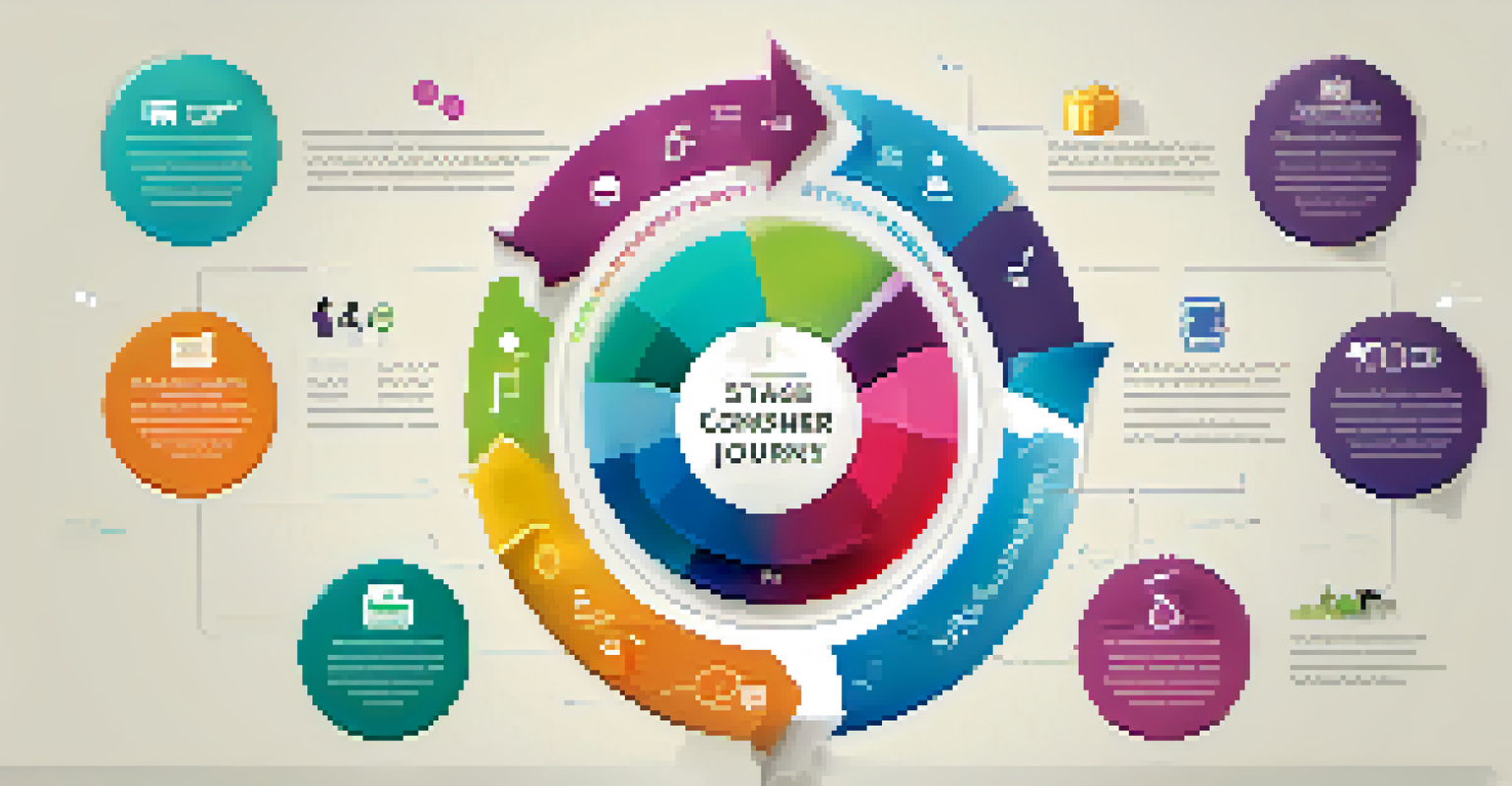Analyzing the Consumer Journey: Stages of Decision-Making

What is the Consumer Journey and Why It Matters
The consumer journey refers to the path a buyer takes from realizing a need to making a purchase. Understanding this journey is crucial for businesses, as it helps tailor marketing strategies to align with consumer behavior. When companies grasp how customers think and act at each stage, they can better meet their needs and expectations.
The consumer isn't a moron, she's your wife.
Consider the journey like a road trip; knowing your route helps you plan stops along the way. Similarly, businesses can identify pivotal moments in the consumer journey where they can influence decisions. This insight can lead to more effective engagement and ultimately drive sales.
Ultimately, analyzing the consumer journey allows brands to create more personalized experiences. This fosters loyalty and can turn one-time customers into brand advocates.
Stage 1: Awareness - Recognizing a Need
The first stage of the consumer journey is awareness, where a person realizes they have a need or problem. This could be triggered by various factors, such as a personal experience, marketing, or even word-of-mouth from friends. At this point, consumers are often seeking information to understand their options.

For example, someone might realize they need a new phone after their current one starts malfunctioning. This recognition prompts them to start looking for alternatives, marking the beginning of their journey. Businesses that excel in this stage often invest in targeted advertising to catch potential customers' attention.
Understanding the Consumer Journey
Grasping the consumer journey allows businesses to tailor their marketing strategies to align with customer needs and behaviors.
By creating informative content and strong brand visibility, companies can ensure they are top-of-mind when consumers begin their search for solutions.
Stage 2: Consideration - Researching Options
Once consumers become aware of their needs, they enter the consideration stage, where they start researching potential solutions. This is where they compare products, read reviews, and gather information to evaluate their choices. The goal here is to narrow down options based on personal preferences and needs.
Customers will never love a company until the employees love it first.
For instance, after recognizing the need for a new phone, a consumer might visit several websites to read reviews and watch comparison videos. This exploration is crucial, as it shapes their perception of different brands and products. Businesses can facilitate this stage by offering detailed product information and engaging content.
Brands that provide helpful resources, such as comparison charts or expert opinions, can position themselves as trusted sources and influence the consumer's decision-making.
Stage 3: Decision - Choosing the Right Product
In the decision stage, consumers are ready to choose a product or service that best fits their needs. This is often influenced by factors like price, brand loyalty, and the information gathered during the consideration phase. At this point, consumers may also seek reassurance through testimonials or guarantees.
Imagine a shopper who has narrowed their choices down to two smartphones; they might prefer one brand over the other due to positive reviews from friends. This is where effective marketing and customer support can make a significant difference. Businesses that build trust and demonstrate value can tip the scales in their favor.
Stages Influence Consumer Decisions
Each stage of the consumer journey, from awareness to loyalty, plays a crucial role in shaping purchasing decisions and fostering brand loyalty.
Offering promotions or easy return policies can also encourage consumers to make that final leap and complete their purchase.
Stage 4: Purchase - Completing the Transaction
The purchase stage is where the consumer finalizes their decision and buys the product or service. This step can be influenced by the ease of the purchasing process, available payment options, and customer service. A smooth transaction can significantly enhance the overall shopping experience.
For example, a consumer may abandon their shopping cart if the checkout process is complicated or lengthy. Therefore, simplifying this process can help reduce cart abandonment rates. Businesses that offer multiple payment methods and clear instructions can create a more enjoyable buying experience.
Additionally, providing immediate confirmation and follow-up communication can reinforce the consumer's choice and build confidence in their purchase.
Stage 5: Post-Purchase - The Experience Matters
After the purchase, consumers enter the post-purchase stage, where their experience with the product influences future decisions. This phase is critical for building brand loyalty and encouraging repeat purchases. Brands should focus on customer satisfaction and provide support to ensure a positive experience.
For instance, if a consumer enjoys their new phone and receives excellent customer service, they are likely to return to the same brand for future needs. Creating an engaging follow-up process, such as sending satisfaction surveys or personalized recommendations, can enhance this relationship. Businesses that actively seek feedback demonstrate they care about their customers.
Positive Experiences Build Loyalty
A great post-purchase experience can transform customers into advocates, enhancing brand reputation through word-of-mouth.
Ultimately, a positive post-purchase experience can turn happy customers into loyal advocates, spreading the word about the brand.
Stage 6: Loyalty - Turning Customers into Advocates
In the loyalty stage, satisfied customers become brand advocates, promoting the product to others. This is when companies can leverage their loyal customer base through referral programs or exclusive offers. By rewarding repeat customers, businesses can encourage them to continue choosing their brand.
Imagine a customer who loves their new phone and shares their experience on social media. This kind of organic promotion is invaluable, as it comes from a trusted source. Brands that actively engage with their loyal customers can foster a community of advocates, amplifying their reach.

Moreover, maintaining open communication and showing appreciation can strengthen these relationships, ensuring customers feel valued.
Conclusion: Mapping the Consumer Journey for Success
Understanding the stages of the consumer journey is essential for any business aiming for success in today's competitive market. By analyzing this journey, brands can tailor their marketing strategies and enhance customer experiences at every stage. This not only boosts sales but also builds long-term relationships with customers.
Just like a well-planned road trip, having a clear map of the consumer journey allows businesses to anticipate challenges and seize opportunities. By being present and responsive at each stage, brands can create a seamless experience that resonates with consumers.
In the end, the goal is to create a journey that not only satisfies customer needs but also leaves them excited to return.